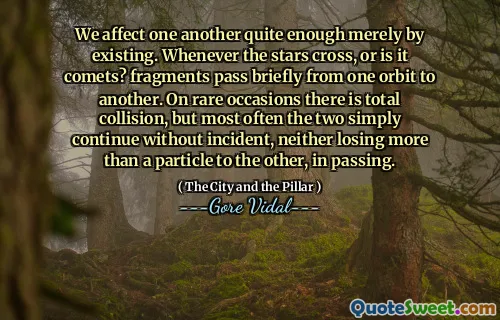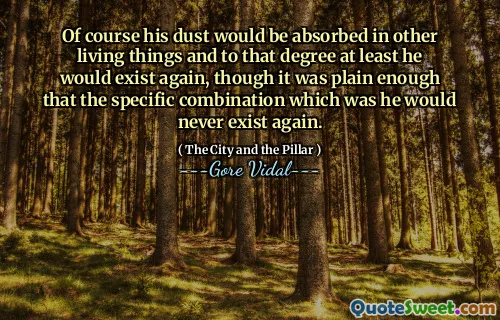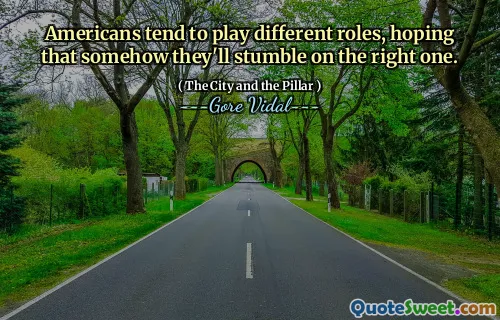
He returned alone and happy, with three cups placed in front of him on the table: two empty, and one half filled with the effects of lipstick. He arranged the cups to form a triangle, but when he tried to arrange them in the form of a square failure. Why? Because three cups should be able to form a square. He felt sad.
In "The City and the Pillar" by Gore Vidal, the protagonist comes back content, bringing three cups to the table. Two of these cups are empty, while one has remnants of lipstick, suggesting a connection to someone else. He tries to arrange the cups in a triangle formation, successfully, but struggles to place them in a square, which leads to a sense of disappointment.
This moment reflects his internal conflict, as the act of forming a square with three cups symbolizes his desire for completeness and the inability to achieve it. The sadness he feels illustrates his awareness of limitations, hinting at broader themes of longing and unfulfilled expectations in his life.











